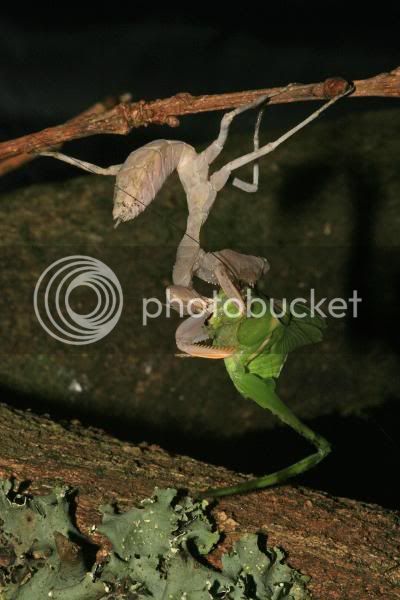Quake
Well-known member
I got mealworms as food, and they are having a little trouble eating them. They will pick them up near the head, and try to dig in, but 2 problems arise. The mealworms squirm a little, and when they wiggle too much the mantid drops it. Also that they are a little hard for the little guy's jaw, he takes a good bit to bite in, so he ends up dropping it due to wiggling before he gets a bite.




